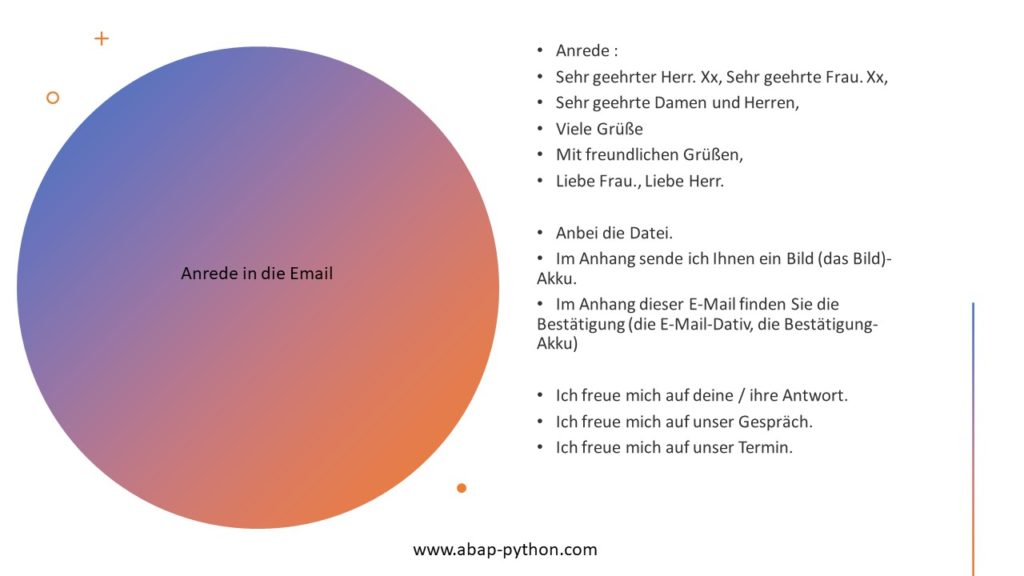Anrede in die Email :

The salutations in Emails is the first thing the recipients read and it should be correct to make a best impression. In German we have some basic salutations which differs based on whether it is formal or informal.
In formal context when we are addressing a male we use
Sehr geehrter Herr. XXX,
In formal context when we are addressing a female we use
Sehr geehrte Frau. XXX,
In formal context when we don’t know who they are,
Sehr geehrte Damen und Herren,
In informal context when we are addressing a male we use
Lieber Herr. XXX, / Lieber XXX
In informal context when we are addressing a female we use
Liebe Frau. XXX, / Liebe XXX
When adressing more than one person,
Liebe Tom und Harry,
Basic phrases useful in Emails :
- Anbei die Datei – Attached the file
- Im Anhang sende ich Ihnen ein Bild (das Bild)- Akku. – I am sending you a picture in attachment.
- Im Anhang dieser E-Mail finden Sie die Bestätigung (die E-Mail-Dativ, die Bestätigung- Akku) – You will find the confirmation in the attachment to this e-mail.
Ending Variations:
- Ich freue mich auf deine / ihre Antwort. – I look forward to your / her answer.
- Ich freue mich auf unser Gespräch. – I’m looking forward to our conversation.
- Ich freue mich auf unser Termin. – I’m looking forward to our meeting.
- Viele Grüße / Liebe Grüße / Herzliche Grüße – Informal
- Mit freundlichen Grüßen – Formal